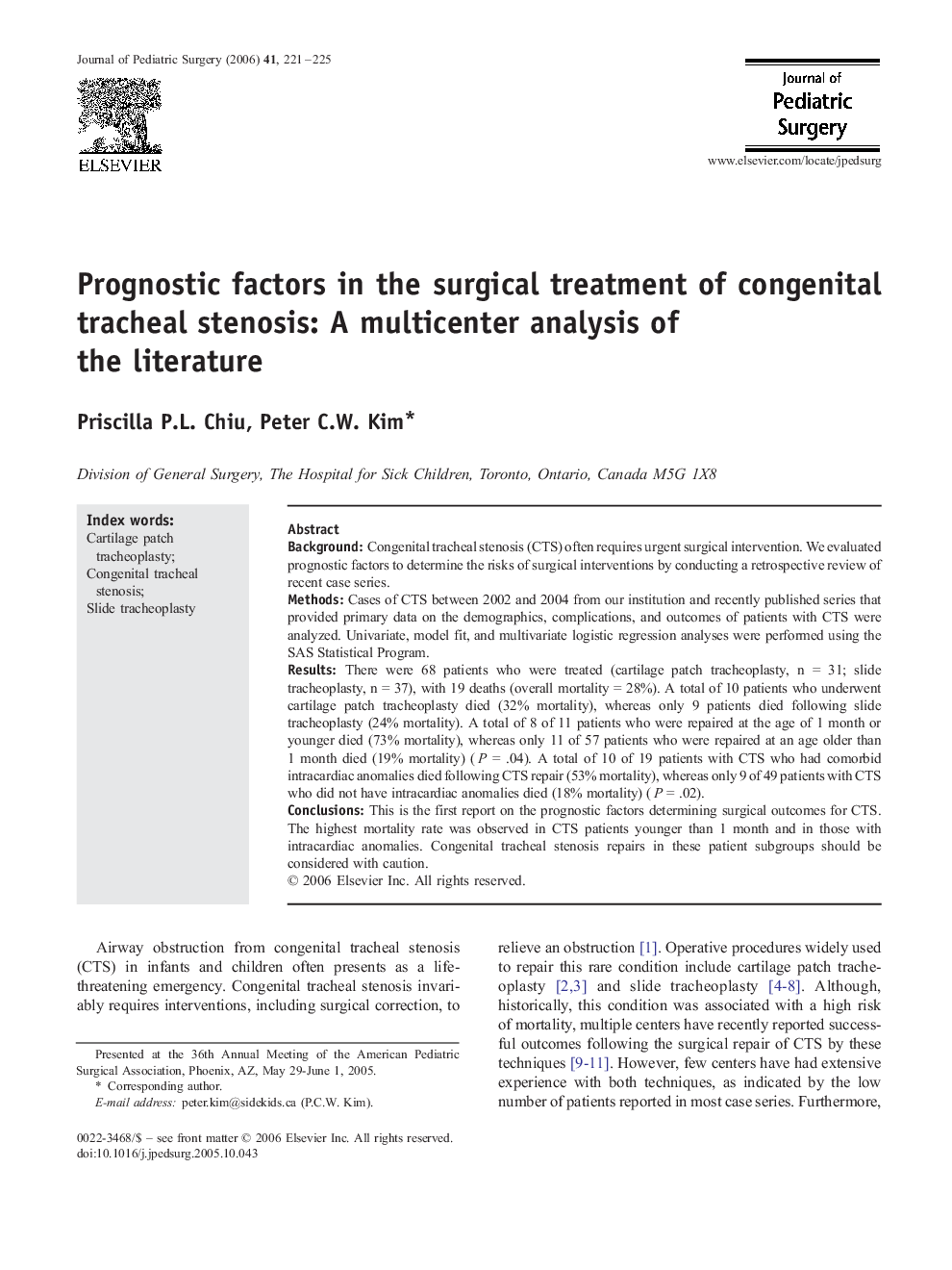| Article ID | Journal | Published Year | Pages | File Type |
|---|---|---|---|---|
| 4160804 | Journal of Pediatric Surgery | 2006 | 5 Pages |
BackgroundCongenital tracheal stenosis (CTS) often requires urgent surgical intervention. We evaluated prognostic factors to determine the risks of surgical interventions by conducting a retrospective review of recent case series.MethodsCases of CTS between 2002 and 2004 from our institution and recently published series that provided primary data on the demographics, complications, and outcomes of patients with CTS were analyzed. Univariate, model fit, and multivariate logistic regression analyses were performed using the SAS Statistical Program.ResultsThere were 68 patients who were treated (cartilage patch tracheoplasty, n = 31; slide tracheoplasty, n = 37), with 19 deaths (overall mortality = 28%). A total of 10 patients who underwent cartilage patch tracheoplasty died (32% mortality), whereas only 9 patients died following slide tracheoplasty (24% mortality). A total of 8 of 11 patients who were repaired at the age of 1 month or younger died (73% mortality), whereas only 11 of 57 patients who were repaired at an age older than 1 month died (19% mortality) (P = .04). A total of 10 of 19 patients with CTS who had comorbid intracardiac anomalies died following CTS repair (53% mortality), whereas only 9 of 49 patients with CTS who did not have intracardiac anomalies died (18% mortality) (P = .02).ConclusionsThis is the first report on the prognostic factors determining surgical outcomes for CTS. The highest mortality rate was observed in CTS patients younger than 1 month and in those with intracardiac anomalies. Congenital tracheal stenosis repairs in these patient subgroups should be considered with caution.
